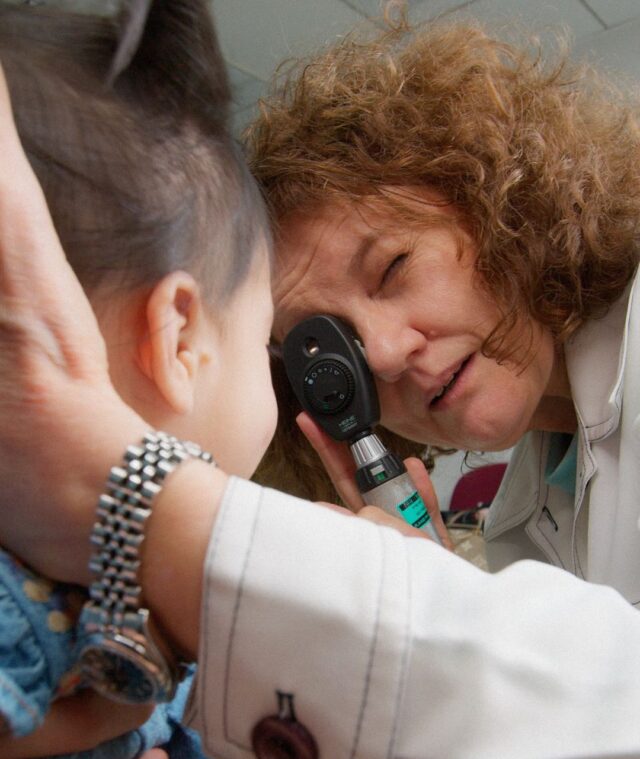The American Optometric Association (AOA) recommends that children get their first eye examination between ages three and five to ensure their eyes are developing properly and do not show signs of eye disease.
Unfortunately, a trusted eye specialist for kids says that not everyone gets their first ophthalmic exam at this age. Because of this, many people undergo one only when they are older – or encounter their first eye discomfort or difficulty – during their teens or early adulthood.
Comprehensive Eye Exams: An Overview
Regardless of your age, getting your first comprehensive eye exam can be a strange experience for some.
After all, the thought of having someone checking your eyes can be daunting. A room full of equipment and tools you don’t know anything about can make anyone feel apprehensive, too.
However, being worried before and during your ophthalmic test can keep you feeling uncomfortable throughout the examination visit. Although this would not affect your exam results, your ophthalmologist would want you to remain calm while you’re in the testing room to reduce your uneasiness.
Knowing what to expect during a comprehensive eye test can help you prepare for and feel relaxed during your comprehensive eye exam.
To help you with this, we’ve listed below the steps and tests you can expect when you get an ophthalmic exam.
1. Medical History
The first part of a clinical eye test involves getting your medical or health history.
Your ophthalmologist will ask you questions about your eye health and general health condition. These include queries regarding allergies and illnesses you may have.
Your doctor will also ask you questions about your present and family history of eye disorders and environmental conditions that could affect your vision or eye health.
The ophthalmologist needs to ask all these questions to help them know what to focus on during the exam. The information they get can also aid them in determining and recommending the right preventative eye care measures that will enable you to keep your eyes healthy.
2. Visual Acuity Test
The visual acuity test is one of the most straightforward exams you can take during your visit to your ophthalmologist.
This eye test measures the sharpness of your vision.
During this part, your doctor will ask you to read letters on a projected eye chart (the Snellen Eye chart) while covering one eye at a time.
Your specialist may ask you to look through a phoropter, a device with different lenses that can help you see better as you read the letters.
With this device and process, which is called refraction, your doctor can determine if you need glasses and make the right corrective lens prescription for you.
3. Color Vision Test
During the exam, your ophthalmologist will check for signs of color blindness or color deficiency.
This test involves showing you a set of images with colored dots with numbers in various colors. People with a color deficiency often have difficulties seeing these figures.
Aside from checking for signs of color blindness, this test also lets your specialist know if you have any eye health problems that could affect your color vision.
4. Visual Field Test
Your doctor might also want to check for the presence of blind spots (called scotomas) in your side or peripheral vision. They can do this through a visual field test.
During this test, the doctor will hold a finger or object and move it gradually from one side of your face to the other. They can also move it up and down and bring it close to your eyes.
Your ophthalmologist may use a computer program to conduct this exam.
Throughout this test, you can only move your eyes, not your head.
If the result of this test indicates the presence of blind spots, your doctor will conduct another exam to check for glaucoma and other possible eye diseases.
5. Slit Lamp Exam
Under this test, your doctor will use a slit lamp or biomicroscope (a binocular microscope) to examine your eyes’ internal and external parts using high magnification.
During this exam, you have to place your chin and forehead against the rests on the biomicroscope’s front. Your doctor will then examine the external parts of your eyes, such as the cornea, conjunctiva, iris, and lens.
Your specialist will also use a hand-held lens with the slit lamp to check the internal components of your eyes, including the retina and optic nerve.
The slit lamp exam detects different types of eye conditions and diseases, such as cataracts, corneal ulcers, and macular degeneration.
It is also one of the usual tests used to determine if a patient can undergo surgical eye procedures, such as laser eye surgery in Dubai, or other options.
6. Pupil Dilation
If your medical history shows you have risk factors for eye diseases, you are likely to undergo a pupil dilation test.
A pupil dilation test lets your doctor gain a better view of your eye’s internal parts, which they can do if your eyes are dilated or larger.
During this exam, your specialist will use dilating drops to make your pupils bigger temporarily.
After 20 to 30 minutes, your pupils will be fully dilated. Your ophthalmologist will use different instruments to check your eyes more closely.
7. Tonometry
Another test your ophthalmologist might give you during your comprehensive eye exam is tonometry.
During this exam, your doctor will put specialized drops to numb your eyes. Afterwards, they will use a tonometer to blow a puff of air on the cornea or apply a flat-tipped cone near or against your eye gently.
The device measures the pressure it takes to flatten a part of your cornea. High pressure is usually a sign of glaucoma.
Most people have no warning signs of glaucoma until they are already experiencing vision loss. Because of this, tonometry is usually included in eye exams.
Experiencing a Worry-Free Comprehensive Eye Test
When you know the type of eye tests you’ll undergo, you won’t have to spend a lot of time thinking and worrying about them as you prepare for your comprehensive eye exam.
These tests are not painful and if you feel some discomfort, they are only minimal and go away quickly.
These details can help you stay calm during your visit to your ophthalmologist.
Schedule an eye exam with one of our ophthalmologists by calling our toll-free numbers or emailing us.








